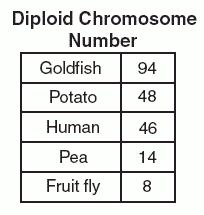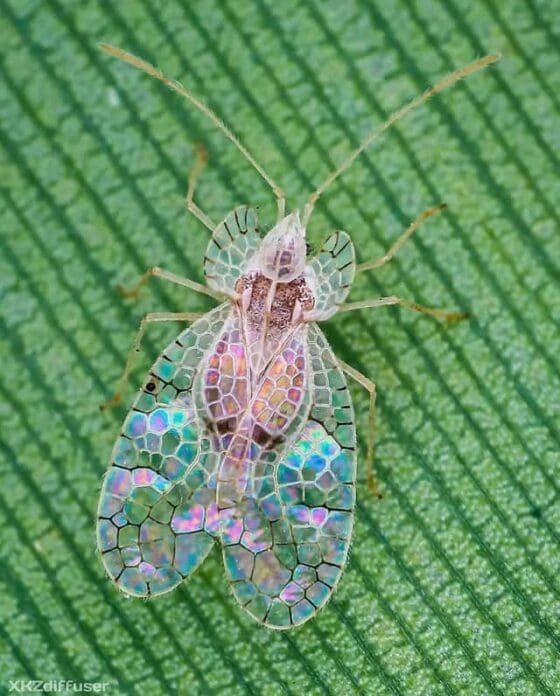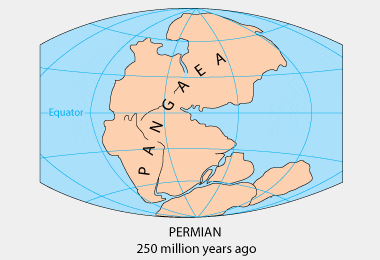Reference: 3. OBSERVATIONS FROM MOLECULAR BIOLOGICAL STUDIES
- The human genome contains a great deal of what is referred to as non-functional DNA, i.e., DNA that is not translated into proteins. Because these elements are not functional in the usual sense, they are passed from generation to generation without experiencing the selective pressures brought about by natural selection. Humans do not have the ability to synthesize vitamin C because the gene involved in vitamin C synthesis is non-functional in humans. In other animals that can produce vitamin C, this same gene functions properly. In other words, humans have the same gene, but it is “broken” so to speak. Chimpanzees and gorillas also posses this same gene which is broken in the same manner as it is in humans. The odds of this pattern of shared mutations occurring by chance are extremely low. But this is exactly what we would expect to see if humans, chimpanzees, and gorillas were all descended from a common ancestor who first experienced this defective gene. Because this ancestor ate a diet that was adequate in vitamin C, the defect had no overt consequences and could be passed on without harm to succeeding generations.
- Response: This is easy to answer. When the Creator uses the same template (RNA DNA) for all life. Then all life will be related in some form or fashion. It does not mean we evolved that way.
Side note: The human body has several interdependent organs and systems. What that means is that not one of the interdependent organs or systems can exist by itself. Evolutionists would have us believe that this does not matter. But the reality of this means that almost every system and organ had to evolve at precisely the same time for everything to work. Which means only instant creation works because all would be ready to work at the same time. Evolution cannot achieve this on any level. Evolution does not have perfect timing because that takes math which requires intelligence. So always referring to us and other animals having a common ancestor is at best an assumption.
- Cytochrome c is a cellular protein involved in a process known as electron transport. Studies have shown that only about a third of the 100 amino acids that make up this protein are essential to its function. Most of the amino acids are “hypervariable” and can be replaced by a large number of functionally equivalent analogs. H.P. Yokey (“Information Theory and Molecular Biology”, New York, Cambridge University Press, 1992) has calculated that there are a minimum of 2.3 x 10^93 possible sequences of amino acids that would provide functionality to cytochrome c. In spite of this incredible number of possible functional sequences, humans and chimpanzees have exactly the same cytochrome c sequence, whereas other organisms have different ones.
- Response: Again this can be explained in the Creator using the same template (RNA DNA) for all life. The “similar created life” is going to have closely related biological makeup. Also through the evolutionists trying to prove evolution, it is known that less similar life is going to have less related biological makeup. So this works for creation as well. Because the further you get away from similarities in the model you are comparing the others to, the less similar they will be. What I often wonder is why another template for life besides RNA and DNA never evolved? Because as long as the template for life stays always the same it points to a Creator not random chance. Because there is no law or mechanism that would restrict supposed evolution from going away from the original template to evolve a better one. To imply or claim the first template was perfect so another one was not needed is to deny the very foundation of what evolution is all about. Evolution does not get it right the very first time or mutating and evolving would not be needed.
- Because of the redundancy of the DNA coding system, there are over 10^49 different DNA sequences that could code for the exact same amino acid sequence in cytochrome c. In humans and chimps, the DNA sequence that codes for cytochrome c differs by only a single base unit.
- Response: Again this is because all life uses the same template (RNA DNA) so any life that closely resembles another with the same template is going to have similarities in biological makeup as well. Which makes us only related through the same template not that we evolved from anything.
- Transposons are virus-like genetic sequences that randomly insert themselves into host DNA. Except in rare instances, they are passed on from generation to generation by DNA duplication and inheritance. One important transposon is known as the “Alu” element. All mammals contain many of these elements, which constitute about 10% of the human genome. In the human a-globin cluster there are seven Alu elements, and all of them are also present in the chimp in exactly the same seven locations.
- Response: Same answer as before.
- Retroviruses are the molecular remains of past viral infections that occur in host DNA. They are produced when viruses insert their own DNA into the DNA of the host’s germ line cells. These randomly inserted sequences are then passed on by inheritance to the host’s descendants. There are at least seven different know instances of common retrogene insertions between chimps and humans.
- Response: Same answer as before.
- If humans and chimpanzees are descended from a common ancestor, as evolutionary theory contends, then both species should have the same, or very similar, number of chromosomes. It turns out that humans have 23 chromosomes in their gamete cells and chimpanzees have 24. The evidence strongly indicates that a chromosomal fusion event has occurred in humans in the intervening time since humans and chimpanzees evolved from their common ancestor. G banding is process of analyzing DNA to obtain a detailed “fingerprint” that is characteristic of each chromosome. Chromosome 2 in humans has exactly the G banding pattern that one would expect if two of the chimpanzee chromosomes had fused end-to-end. Every chromosome has two teleomeres (one on each end) and a centromere in the middle. Human chromosome 2 has two extra teleomeres and one extra centromere in precisely the locations that one would expect had they resulted from the fusion of the two chimpanzee chromosomes.
- Response: There are several things wrong with this conclusion and withholding of information to sell this idea is a deception.
1) The number 2 chromosome in humans is not exactly in the same place on the DNA stand as chimps.
2) It can never be proven that the human chromosome was “ever unfused” in the first place so that during the evolution process it became fused. This whole idea is based on something unprovable being accepted as an absolute truth. Can any evolutionist prove that the number 2 chromosome was ever unfused in humans? If you can with actual evidence and not assumptions I’m all ears.
3) Let’s be honest about what is observable by chromosome changes:
a) Turner’s syndrome is a genetic disorder that affects females. Usually, a female has two X chromosomes; in females with Turner’s syndrome, one of these chromosomes is missing or abnormal. Characteristics of this disorder include short stature and infertility. Other names for Turner’s syndrome include monosomy X, 45X and Ullrich-Turner syndrome.
b) Klinefelter syndrome (or XXY syndrome) is a chromosome disorder that affects males. The affected male has an additional X chromosome, which causes infertility and may cause the development of characteristics such as tall stature and breast development. Treatment may include hormone therapy, cosmetic surgery, speech therapy and counselling.
c) A genetic disorder is caused by an altered set of genes. The four broad groups of genetic disorders are single gene disorders, chromosome abnormalities, mitochondrial disorders and multifactorial disorders. The four main ways of inheriting an altered gene are autosomal dominant, autosomal recessive, X-linked dominant and X-linked recessive. Around 6,000 known genetic disorders are caused by inheriting an altered gene.
d) Down Syndrome is the result of an extra copy of chromosome 21. People with Down syndrome are 47, 21+. Down syndrome affects 1:700 children and alters the child’s phenotype either moderately or severely.
e) Patau Syndrome is a serious eye, brain, circulatory defects as well as cleft palate. 1:5000 live births. Children rarely live more than a few months.
f) Edwards Syndrome almost every organ system affected 1:10,000 live births. Children with full Trisomy 18 generally do not live more than a few months. etc…
And this list can go on and on. So with all the evidence showing how negative and even deadly chromosome changes are evolutionists want us to believe that the fusion of number 2 Chromosome was a positive step. Zero “observable evidence” of positive chromosome changes means the idea is more or less an assumption that takes faith to believe. Withholding all the negative evidence of chromosome changes in the hopes no one will go looking to find what I just posted is a deception. Real truth needs no deceptions. Also if an evolutionist can name an “observable positive chromosome change” I will have no problem listing it here. But let’s be honest again. If there was it would have been listed with this question as positive support evidence. But that’s not what we observed. This is because positive observable chromosome changes don’t exist.







